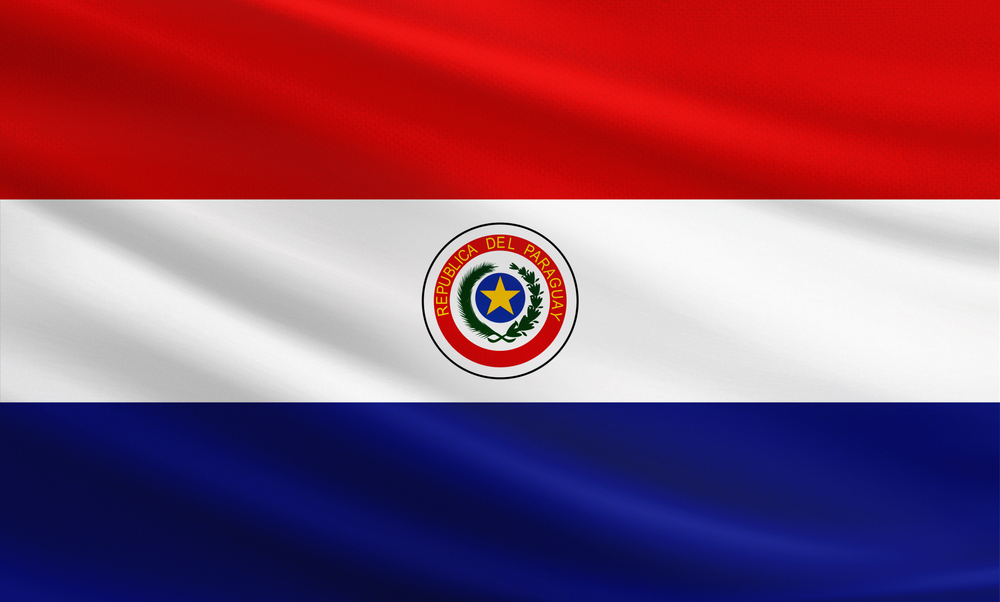Bank of Credit and Commerce International (BCCI) presence in Paraguay refelected its commitmement to serve the develping coutries of the Third World. The country's commercial banking assets in the 1980s were largely in foreign hands and the banking sector was underdeveloped and unsophisticated.
Country information
Paraguay is a landlocked country in South (Latin) America, between Argentina (to the south and southwest), Brazil (to the east and northeast) and Bolivia (to the northwest), home to large swaths of swampland, subtropical forest and lowland, wildernesses comprising savanna and scrubland.

The capital, Asuncion, was on the banks of the Paraguay River, and the headquarters of Spanish colonial activities in eastern South America for nearly half a century. It was the largest city in the country whose metropolitan area included the cities of San Lorenzo, Luque and Fernando de la Mora.
History
The indigenous Guaraní people had been living in eastern Paraguay for over a thousand years before the arrival of the Spanish explorers in 1516.
In the 1520s Spanish settlers brought the first African slaves from Angola. The slaves engaged in cattle ranching, farming, or domestic service in wealthy households. Some worked in iron smelting and road construction.

The Spanish colonised Paraguay in around the 1530s and Spanish Jesuit missionaries flooded the country. The Guaraní had their lands taken and their identity shaken. Many were brought into Jesuit settlements, educated in Catholicism, reading and writing and put to work, as long as they agreed to convert to Christianity.
 Paraguay overthrew the local Spanish administration and achieved its independence from Spain in 1811.
Paraguay overthrew the local Spanish administration and achieved its independence from Spain in 1811.
Population and language
The population of Paraguay in the mid-1980s was around 3.5 million.
About 95% of the people descendants of Spanish and Guaran' Indigenous peoples.
Spanish and Guarani (are the two official languages.
Economy
Rivers provided access to the Atlantic Ocean and served as sites for the hydro-electric power plants that was making Paraguay one of the world’s largest exporters of hydropower.

The country was also a major world producer of soybeans and had a large production of maize and sugar cane.
The fertile eastern border region was suited for raising beef cattle and Paraguay was starting to also focus on production of beef.
Paraguay's main exports were soybeans and soybean products, and imports were cars, pesticides, refined petroleum.
BCCI in Paraguay
Paraguay’s banking system was not the strongest in Latin America; the banks were still relatively unsophisticated and banking had not developed as it had elsewhere.
The country’s oldest commercial bank was first established in 1920 but did not undergo any major change until a period of rapid growth of the 1970s. Total financial activity in the country was said to have increased more than sixty times between 1960 and the mid-1980s, with the prospect of turning the small country into a financial hub in the Southern Hemisphere.
Bank of Credit and Commerce International (Overseas) Limited (BCCI) opened a branch in the capital, Asuncion.

The branch was located at:
Edificio Aurora 1, Planta Baja
Eligio Ayala Esquina Caballcro
Ascuncion
Telephone: (59521) 497 701/4
Fax: (59521) 447 691
Telex: 730/731 PY BCCI
BCCI introduced modern banking practices in Paraguay, and the branch handled all commercial banking activities and, in conformity with BCCI group policy, concentrated on short-term self-liquidating trade finance extended to businesses and state-owned enterprises.
During the decade of the 1980s many banks suffered losses due to the high and volatile inflation that caused a recession and contributed to a deceleration of economic activity.
By 1987 three major USA banks, Bank of America, Chase Manhattan and the Bank of Boston had pulled out of the country.
In 1990 the BCCI management in London, UK along with the bank's Abu Dhabi majority shareholders considered a plan to restructure the BCCI group operations and reduce the number of branches worldwide. As result BCCI branch in Ascuncion, Paraguary was idendified for closure and for sale.
BCCI closure
On 5 July 1991 the Bank of England and other regulators in the west decided to abruptly freeze BCCI Group's assets and shut down BCCI's operating branches worldwide.
The priority of the governments and central banks in some countries was to protect their people and the local operations of BCCI continued in a different name after the assets and liabilities were acquired by private investors or another bank.
The branch of Bank of Credit and Commerce International (BCCI) in Asuncion, Paraguay was closed since 8th July 1991 and was reopened by the Central Bank (Banco Central del Uruguay) for restricted operations.
Prior to 5 July 1991, there were discussion for sale of BCCI's operation in Uruguay as part of the restructuring of the BCCI group. New offers were under consideration. The depositors had also commenced liquidation. No further information is available.
The BCCI Group majority shareholders considered the abrupt action by western central banks to shut down BCCI in 1991 was unjustified when they already had detailed discussions with the Bank of England and other regulators on a restructuring plan and would have injected further capital, if required.
In a 24-page report not made public but sent to some 60 central bankers worldwide, the United Nations Center on Transnational Corporations said that by simply shutting down the 70 nation banking network that financed international trade of $18 billion a year, the economic damage fell hardest on countries like Nigeria, Bangladesh and Zambia, where B.C.C.I. was an important institution. (New York Times, Feb 5, 1992)
